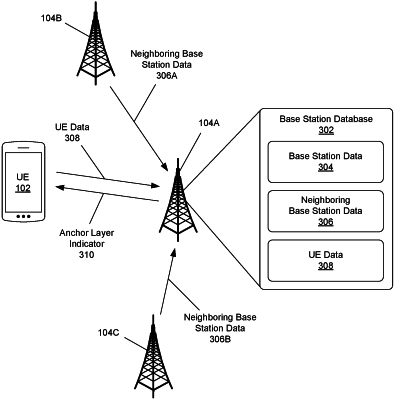| CPC H04W 72/52 (2023.01) [H04W 72/0453 (2013.01); H04W 76/15 (2018.02); H04W 76/27 (2018.02)] | 20 Claims |

|
1. A method comprising:
determining, by a base station of a telecommunication network, user equipment (UE) data of a UE that is connected to the base station, wherein the UE data indicates a set of frequency bands that the UE supports;
identifying, by the base station, one or more candidate frequency bands from the set of frequency bands that are also supported by the base station or a neighboring base station;
determining, by the base station, an experience goal for the UE;
selecting, by the base station, an anchor layer for the UE from the one or more candidate frequency bands, based on determining which one of the one or more candidate frequency bands will meet the experience goal for the UE;
determining, by the base station, that the anchor layer is configured to be used in a dual connection for a leg of a split bearer between the base station and the neighboring base station, wherein the base station comprises a first fifth-generation (5G) gNB and the neighboring base station comprises a second 5G gNB; and
sending, by the base station, an anchor layer indicator to the UE that identifies the anchor layer selected by the base station.
|